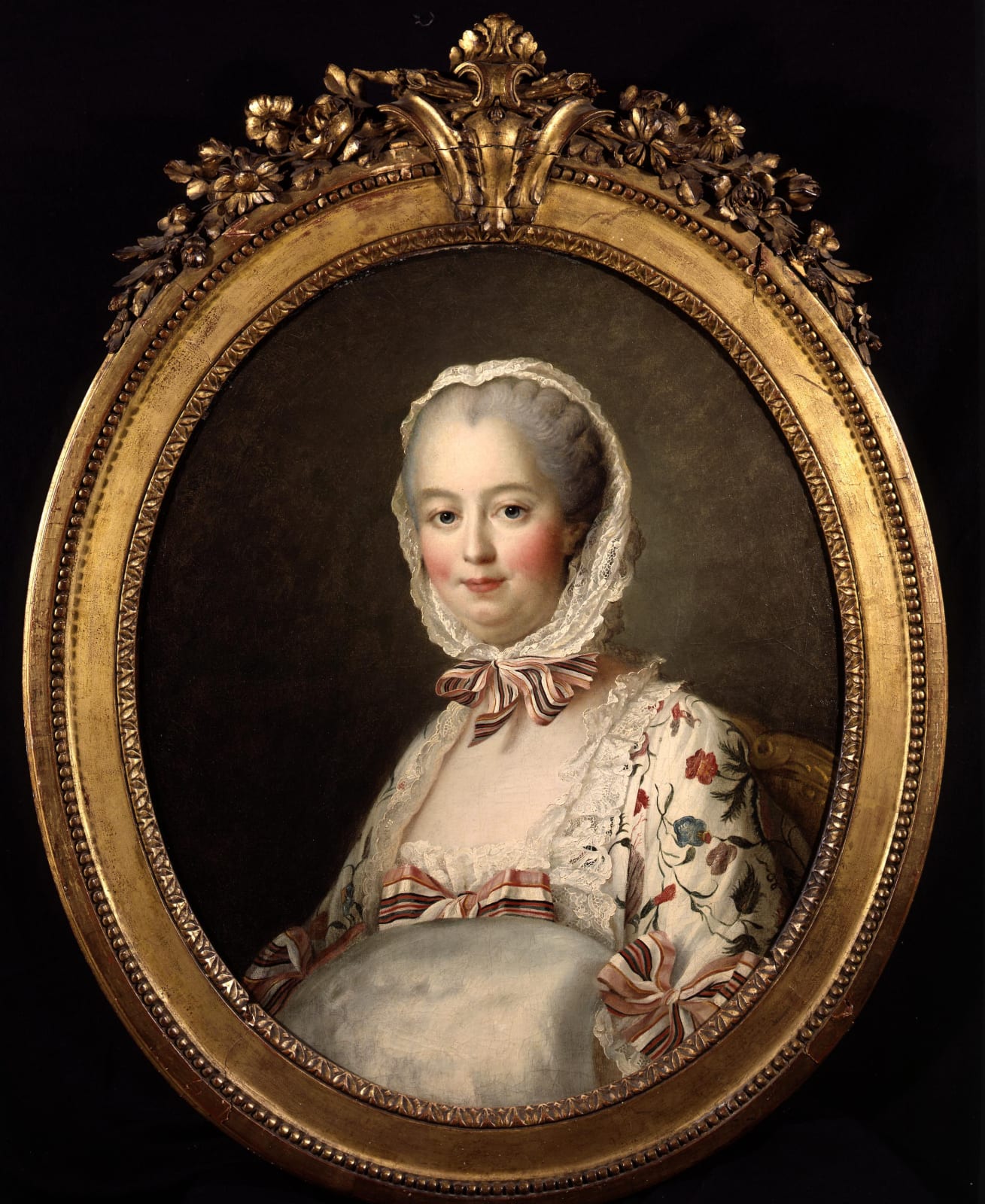
François-Hubert Drouais
Portrait of Madame de Pompadour (1721-64), 1760s
Oil on canvas
25 1/2 x 21 in (64.8 x 53.3 cm)
Philip Mould & Co.
To view all current artworks for sale visit philipmould.com Jeanne-Antoinette Poisson, later created Madame de Pompadour, was born in Paris into a wealthy bourgeois family and was brought up...
To view all current artworks for sale visit philipmould.com
Jeanne-Antoinette Poisson, later created Madame de Pompadour, was born in Paris into a wealthy bourgeois family and was brought up by a guardian, Le Normant de Tournehem. Her charm and social skills, as well as her learning attracted a circle of intellectuals and admirers that included Voltaire and Montesquieu. In 1741 she married Tournehem''s nephew Le Normant d''Etoiles and became a prominent figure at the royal court. In 1745 she was created Marquise de Pompadour and became the official mistress to Louis XV with whom she remained until her death.
She was a lady to whom style and beauty were the supreme embodiments of fashionable taste. Her lavish patronage of the decorative arts fuelled the blossoming of the rococo style, thereby determining the course of French eighteenth century art. She created for the King a series of richly decorated and furnished interiors of a total design ethic, in her chateaux at Crecy, Champs, Bellevue and in the Hotel d'Evreux in Paris. She exhibited a talent for music and private theatricals and under the tuition of Cochin and Boucher became an engraver of some ability. Her beauty combined with her intelligence and position at Court made her the most important female figure of the epoch.
Drouais having worked in Paris with artists such as Boucher and Natoire rapidly established himself as the leading portrait painter at the Court of Louis XV. Madame de Pompadour sat to Drouais on three occasions. The last sitting in 1763 produced an image of which she was so enamoured that she had the artist create a number of versions of it. This portrait is a superb example and one which is very closely related to the original sitting. The prime image is now in the Musee des Beaux-Arts at Orleans, in which Madame de Pompadour is shown bust length with her hands in a white muff. At her death in 1764, Drouais was working on a full-length seated picture with the addition of an embroidery frame, a small dog, curtains and furniture, which is now in the National Gallery, London. Versions which include any of these items must have been made post-1763.
Jeanne-Antoinette Poisson, later created Madame de Pompadour, was born in Paris into a wealthy bourgeois family and was brought up by a guardian, Le Normant de Tournehem. Her charm and social skills, as well as her learning attracted a circle of intellectuals and admirers that included Voltaire and Montesquieu. In 1741 she married Tournehem''s nephew Le Normant d''Etoiles and became a prominent figure at the royal court. In 1745 she was created Marquise de Pompadour and became the official mistress to Louis XV with whom she remained until her death.
She was a lady to whom style and beauty were the supreme embodiments of fashionable taste. Her lavish patronage of the decorative arts fuelled the blossoming of the rococo style, thereby determining the course of French eighteenth century art. She created for the King a series of richly decorated and furnished interiors of a total design ethic, in her chateaux at Crecy, Champs, Bellevue and in the Hotel d'Evreux in Paris. She exhibited a talent for music and private theatricals and under the tuition of Cochin and Boucher became an engraver of some ability. Her beauty combined with her intelligence and position at Court made her the most important female figure of the epoch.
Drouais having worked in Paris with artists such as Boucher and Natoire rapidly established himself as the leading portrait painter at the Court of Louis XV. Madame de Pompadour sat to Drouais on three occasions. The last sitting in 1763 produced an image of which she was so enamoured that she had the artist create a number of versions of it. This portrait is a superb example and one which is very closely related to the original sitting. The prime image is now in the Musee des Beaux-Arts at Orleans, in which Madame de Pompadour is shown bust length with her hands in a white muff. At her death in 1764, Drouais was working on a full-length seated picture with the addition of an embroidery frame, a small dog, curtains and furniture, which is now in the National Gallery, London. Versions which include any of these items must have been made post-1763.
Exhibitions
Wildenstein, 147 New Bond Street, London, Madame de Pompadour, The Art of Living, 7th October-6th November 1992.Be the first to hear about our available artworks
* denotes required fields
We will process the personal data you have supplied in accordance with our privacy policy (available on request). You can unsubscribe or change your preferences at any time by clicking the link in our emails.